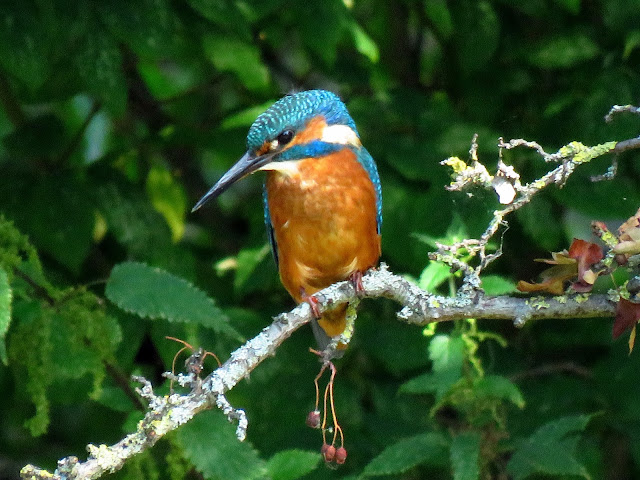The Kingfisher is a stunning bird, most often seen like a fast, straight flying turquoise blurr as they fly along water bodies. Both sexes show an orange chest and belly, a metallic blue on back, head and wings, and white markings on cheeks, and chin. The rump is pale blue. Males have all black bills, while females have an orange lower bill. Their diet is made of small fish or fish fry, like sticklebacks and tadpoles. They are not strictly migratory, but they engage in short distance movements, including across the North Sea, with individuals moving to and from France, the Low Countries and Germany. Kingfishers breed in holes they excavate on banks of rivers and streams.
Status and distribution in Hull
They are scarce bird in the Hull area, although, with a bit of luck and patience, they can probably be seen at any lake or ditch, and by the River Hull and the Humber. Their repeated, urgent piping call usually announces their presence. Known sites include East Park (top shot, 9/08/2022), Pickering Park, Setting Dyke, River Hull, Holderness Drain, Beverley and Barmston Drain, Foredyke Green Pond, Old Fleet and even by the Humber. Kingfishers may breed in a few of these locations regularly, for example, at Holderness Drain or East Park, but as far as I know there is no solid recent breeding evidence. They appear more widely distributed, and are more likely to be seen during the autumn winter, after the young disperse to find new territories.






No comments:
Post a Comment